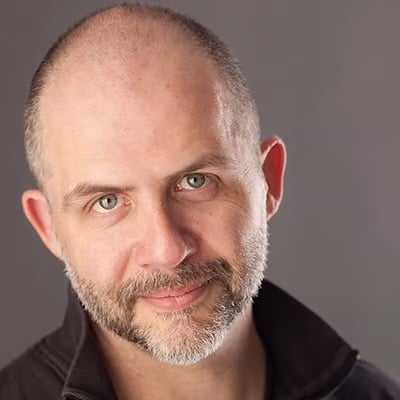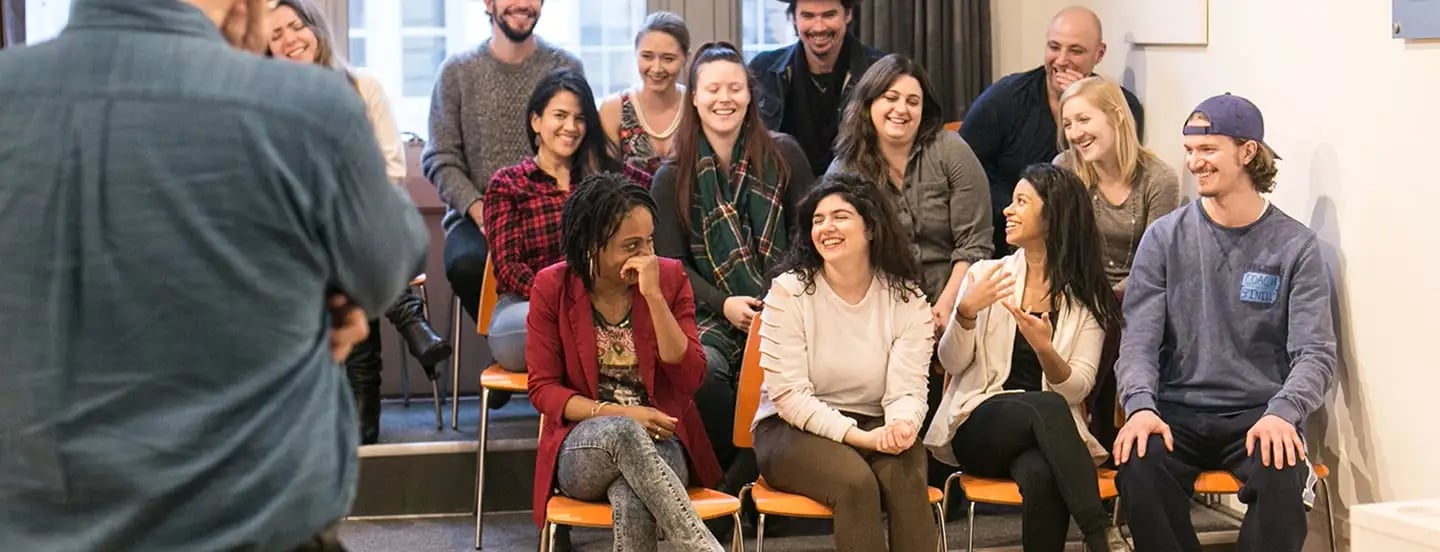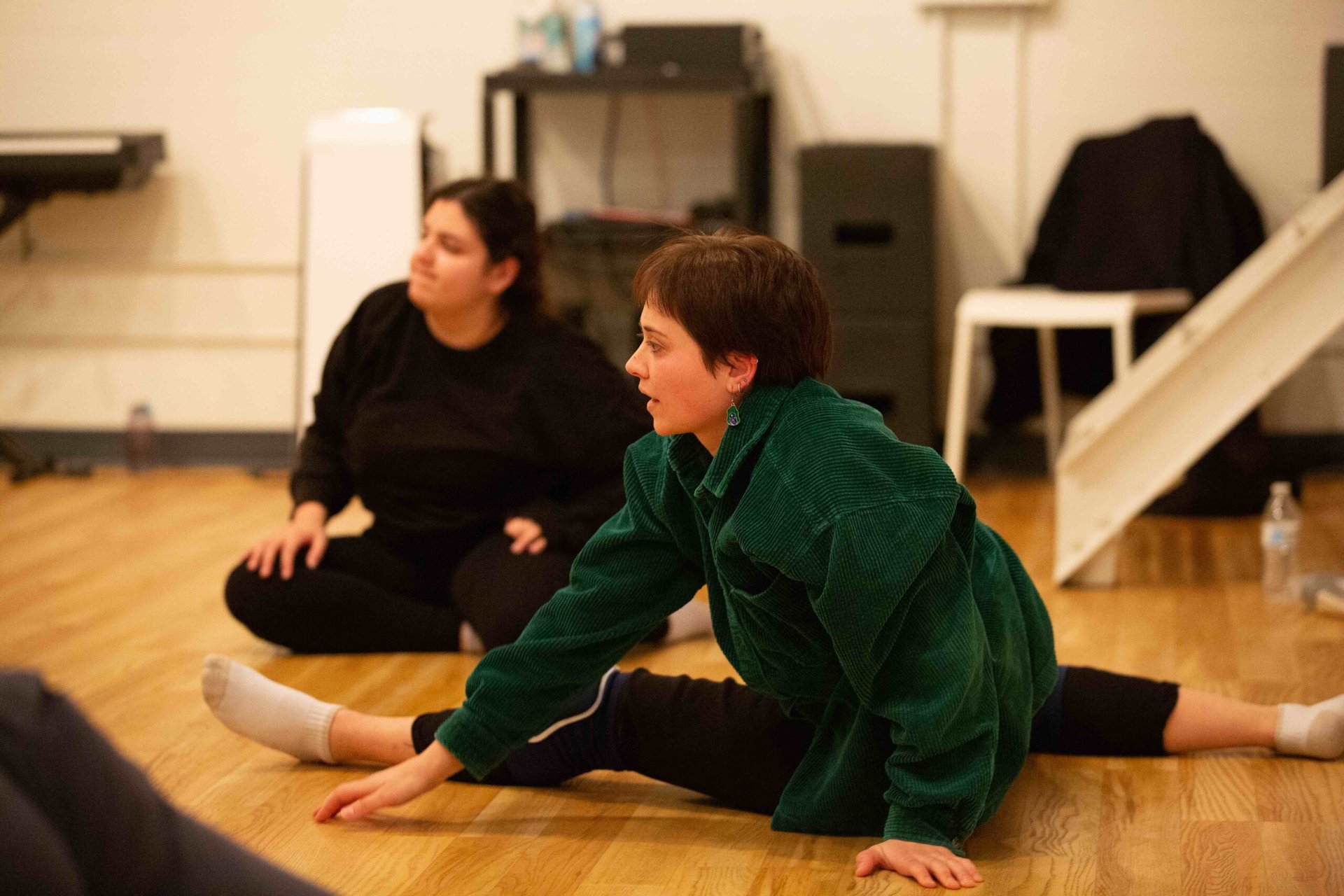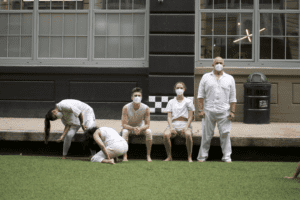Levels I and II are about play, freedom, permission, and expansive motion. There’s music, improvisation, some alignment work, and a lot of contact work. It’s one thing to open up the body and be expansive on your own, but it’s very different to be vulnerable and also be in contact with another person.
Each class in the first two levels has a period of improvisation. There’s lots of feedback from the faculty and ensemble, lots of discussions about individual experiences, and we end with some alignment work – lengthening and strengthening the body. While Level I focuses on play and permission, the Level II is when we dive into the actor’s sensuality, and learn how to fully experience the world with our five senses. This is so you can be more involved moment to moment, integrating the same language as in our acting classes. The first two levels that we teach here are almost, by the book, the Williamson Technique, while Level III and Level IV move beyond that curriculum.
In Level III we concentrate less on release, although that’s always at the heart of what we do, and we start to explore creatively. Level III is about seeing the body as a creative tool and a creative instrument. Level III and Level IV incorporate a cornucopia of different work and techniques that our faculty have developed over their careers. You start thinking about composition and how to communicate and create meaning on stage with your body. Stories that are not necessarily as linear or text driven as are typically conceived of in the Acting class.
Level IV is a performance class, and we create our own content. It culminates with an ensemble devised piece — referred to as the Performance Project. Students really get to practice what it’s like to collaborate, to make something out of nothing, and how to use all of the work from the past three levels in fully embracing physical creativity and composition.
Why is Movement essential to actors?
When fully committed to the movement work, actors truly discover the emotional and the experiential capabilities of their bodies. We think actors are so willing and ready to jump into the experiential side of the work. They become practiced at listening to what their body has to say, not only as a creative medium but also as a channel. A channel that helps them process. So it’s emotive and personal. Only then is the contact that actors make with each other deep, full, personal, and authentic.












